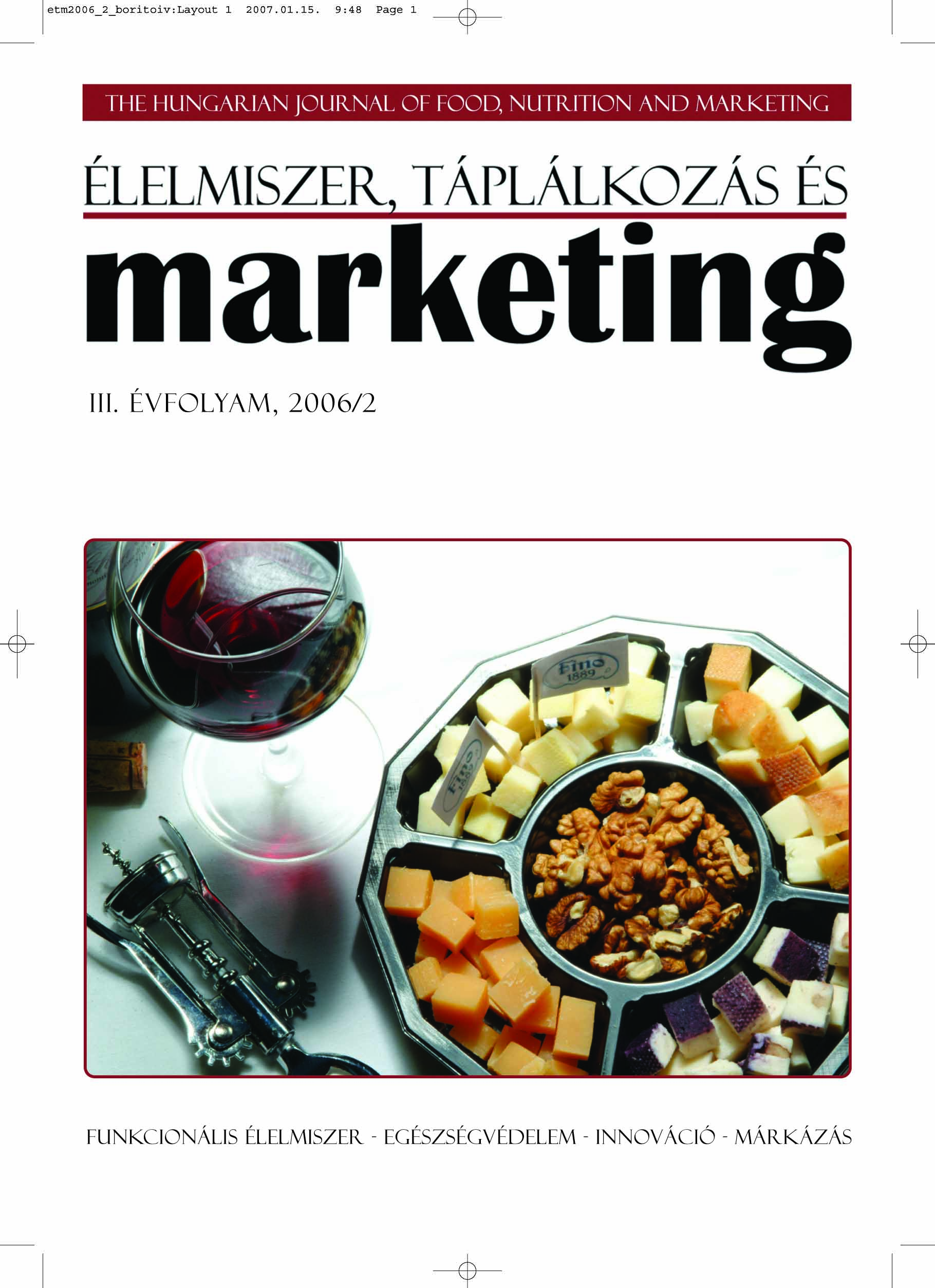Analysis of food consumption trends with focus on strategic foods
Abstract
Main objective of the second phase of an NKFP project named Conditions of improving efficiency in utilizing resources of agriculture
– optimums and practical usage was to identify consumer trends having significant impact on food development and commerce.
Research included both primary and secondary surveys. Secondary survey was pointed on analyzing hypothetic backgrounds of consumer
behavior trends that can affect main streams of food development. Second step – on the basis of literature – was to identify and
analyze main strategic directions of development. It was followed by issuing a consumer questionnaire in being able to analyze consumer
attitudes (and misbelieves) that can have an influence on consumers’ behavior.
Basic approach of the survey was that former base innovations (Kondrathiev cycles) based mainly on technical solutions caused severe
damages to environment and human health. According to this concern the international tendency strengthened assuming that future
strategic developments are to be driven by the need for healthy, qualified and creative people. It can be stated by high probability that
our future is defined by a quick boom in health-industry. On the scope of this tendency organic, conventional and spot-specific production
forms are expected to be ever more emphasized with special respect to the development of functional (health protecting) food.
In all food categories mentioned above intensive development is driven by the ever growing demand for them. Our survey shows that
the main motive behind the growth of the need for organic products is a sort of seek for natural living. Demand for conventional and
region specific products is mostly inspired by the need for recreation, seeking of the ’roots’ and reviving the traditions. Global popularity
of functional foods is supported by the sense for healthy living so here is nothing to wonder about the fact that the given market
has a 100 billion USD turnover.
Global tendencies pictured above, however, can be remarkably influenced by the believes and attitudes of the consumers. According
to Hungarian consumers the ideal food is clean and chemical free, it does not contain additives (E-codes). The involved consumers put
functional foods (designed foods – including vitamins and minerals enriched foods) to the second group. Results shows that Hungarian
consumers have a number of misbelieves when food is concerned and it makes the pattern rather fuzzy. Survey points out that functional
foods can be the break-through points for the food industry.



